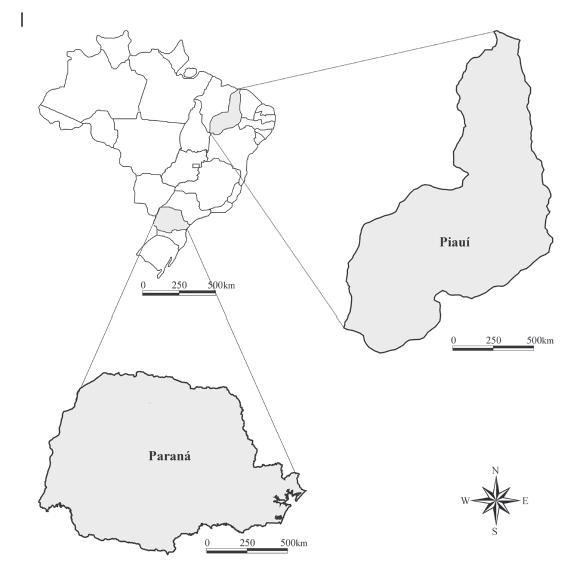The purpose of this study was to evaluate the chemical, physiological and genetic differences in seeds of cactus of the Cereus genus (mandacaru) cultivated in the Northeast (Picos, State of Piauí) and Southern (Maringá, State of Paraná) regions of Brazil. Over a period of eight days, temperatures of 25°C and 30°C were equally efficient for the germination of all the seeds. Oleic acid (C18:1) was the most common fatty acid found in the seeds collected in the Southern (41%) and Northeast (45.5%) regions. The analysis of lipases indicated that seeds from Maringá have high mean observed and expected heterozygosities and that seeds from Picos have a higher number of alleles per loci. Therefore, the seeds of mandacaru from the semiarid region of Northeast as well as the seeds from the South (the two contrasting regions of Brazil) are promising with regards to the preservation of the biodiversity in the genome of mandacaru. The low genetic identity between mandacaru seeds from Maringá and Picos at Lipase-5 locus analysis (I = 0.77) suggests that the mandacaru plants from Maringá and Picos may correspond to two species: C. peruvianus and C. jamacaru, respectively.
Cactus; Cereus peruvianus; Cereus jamacaru; seed germination; fatty acids; lipases; genetic diversity


